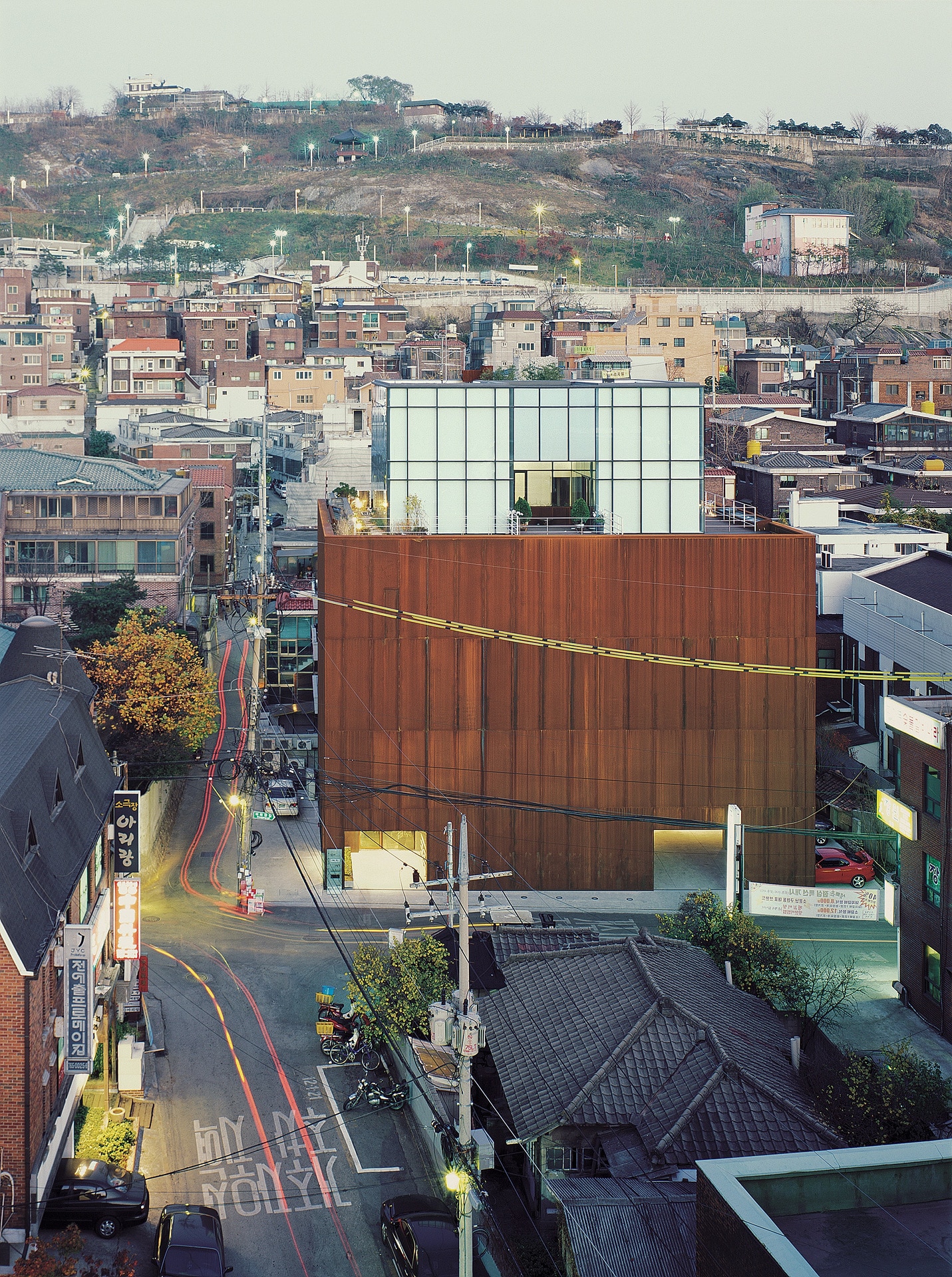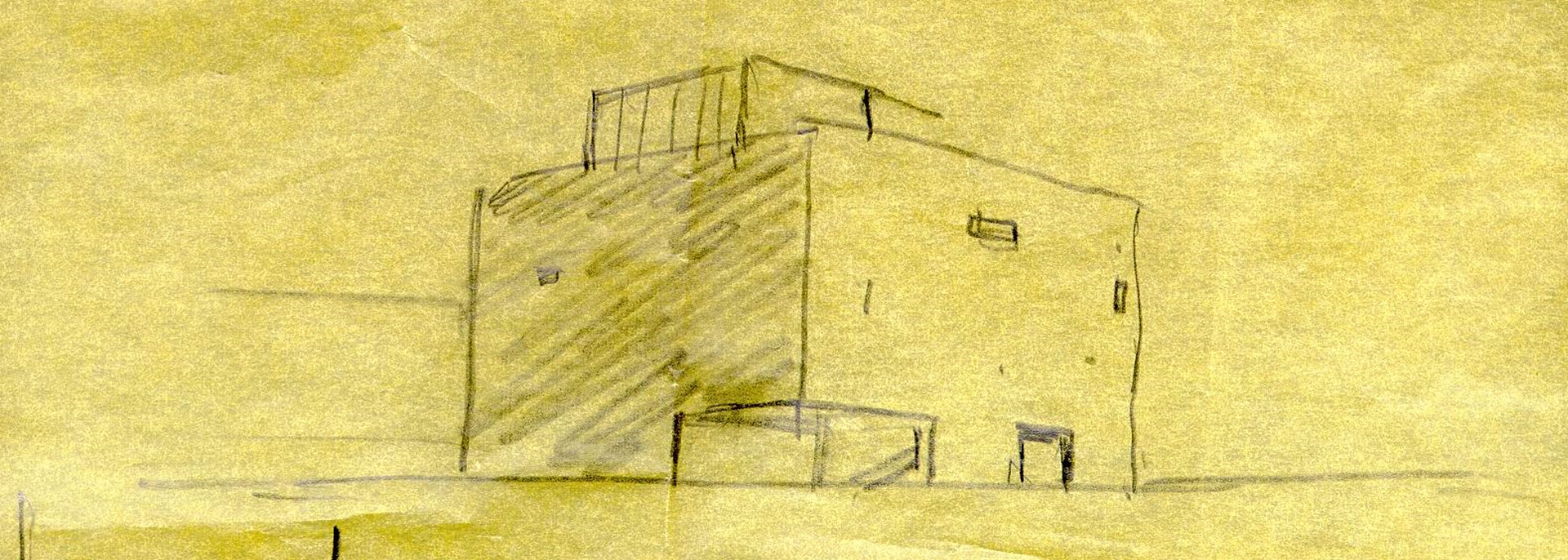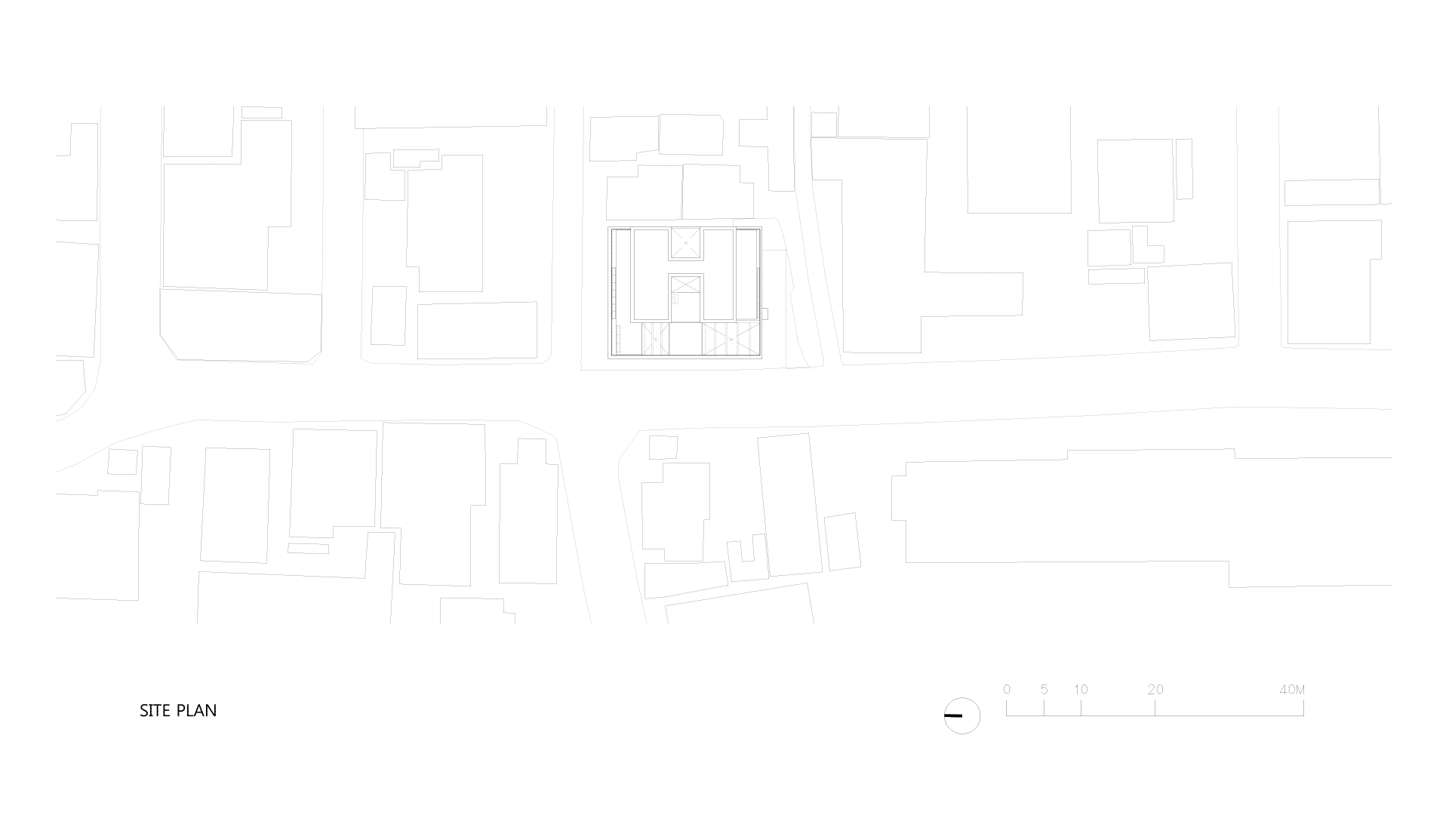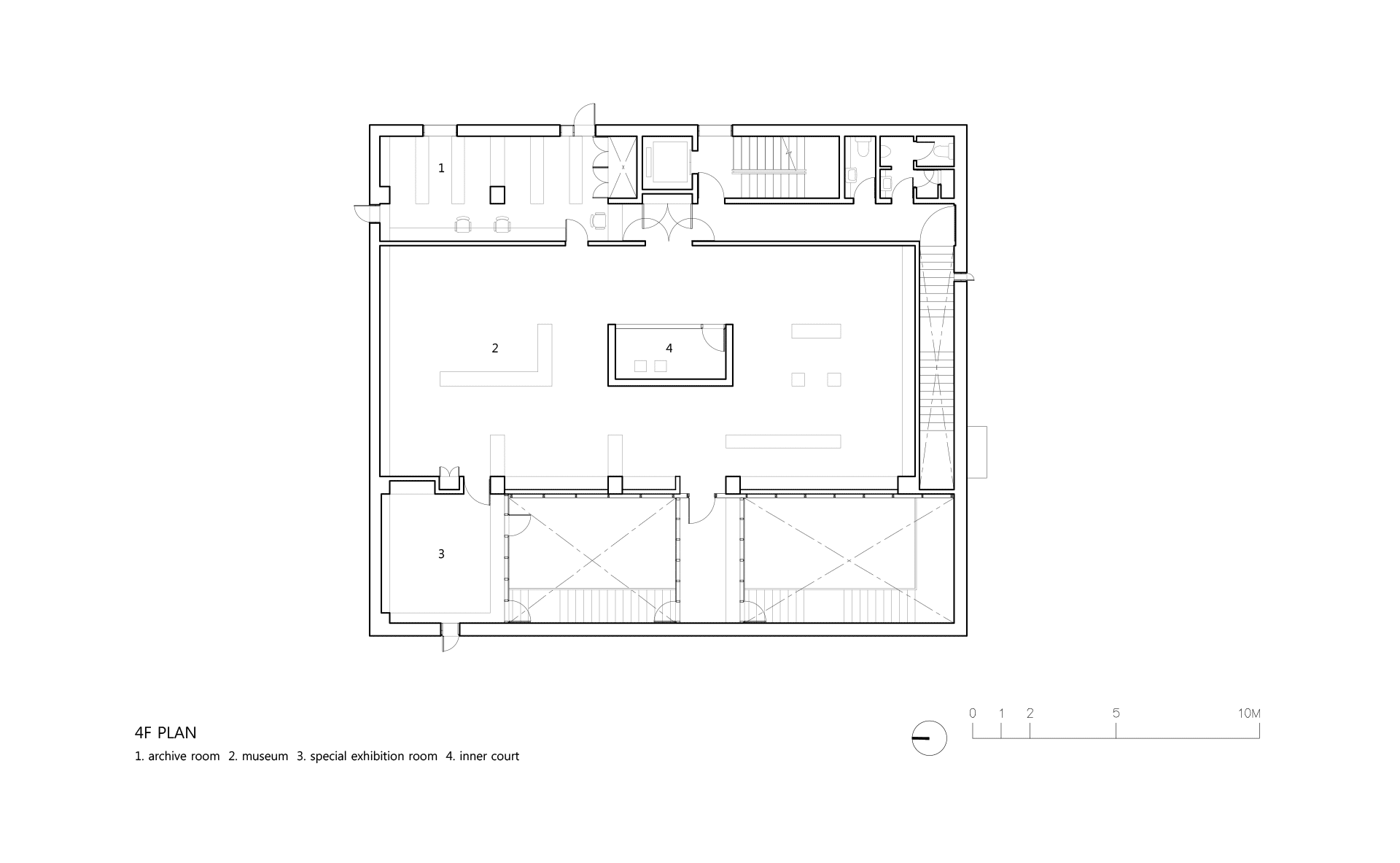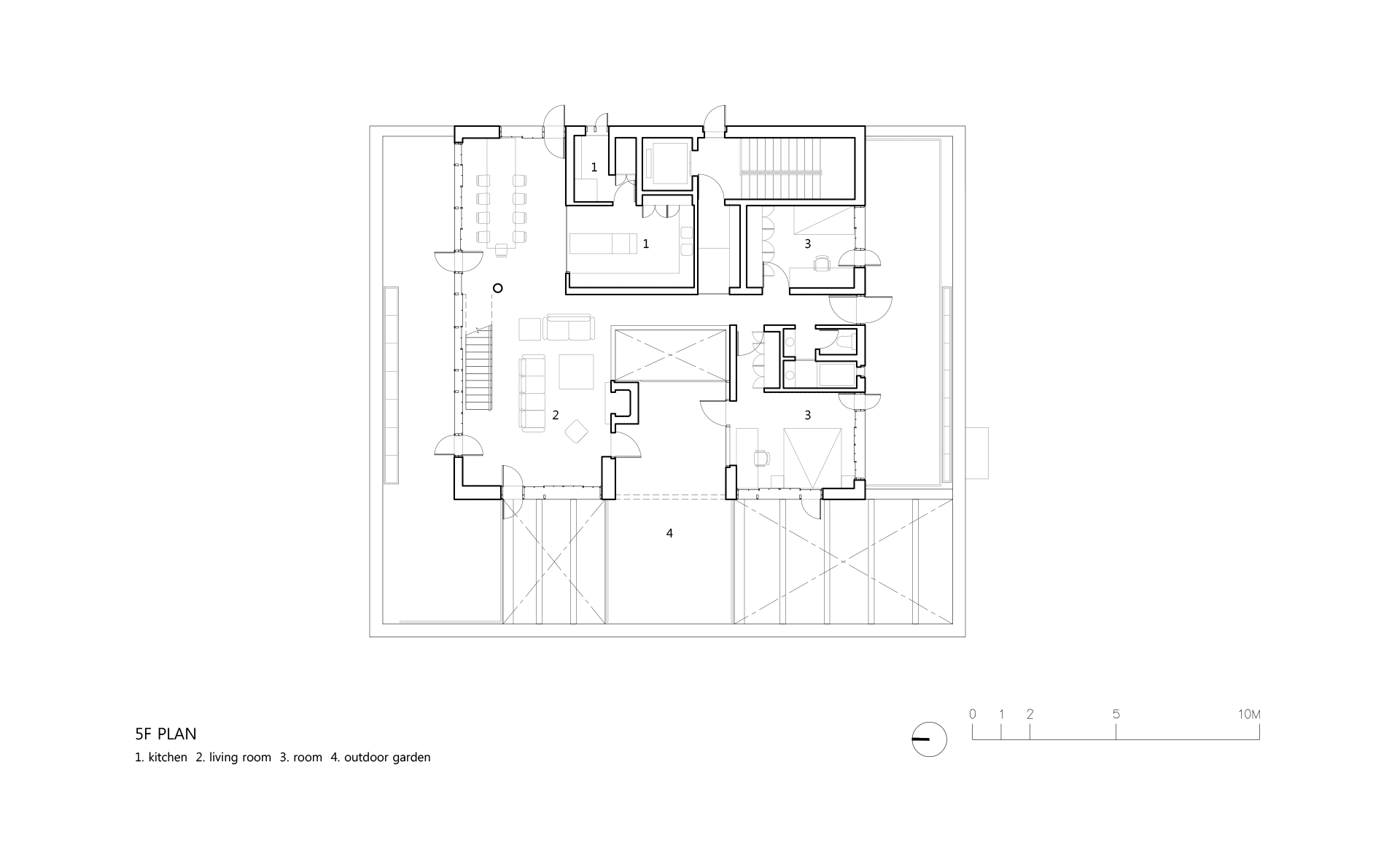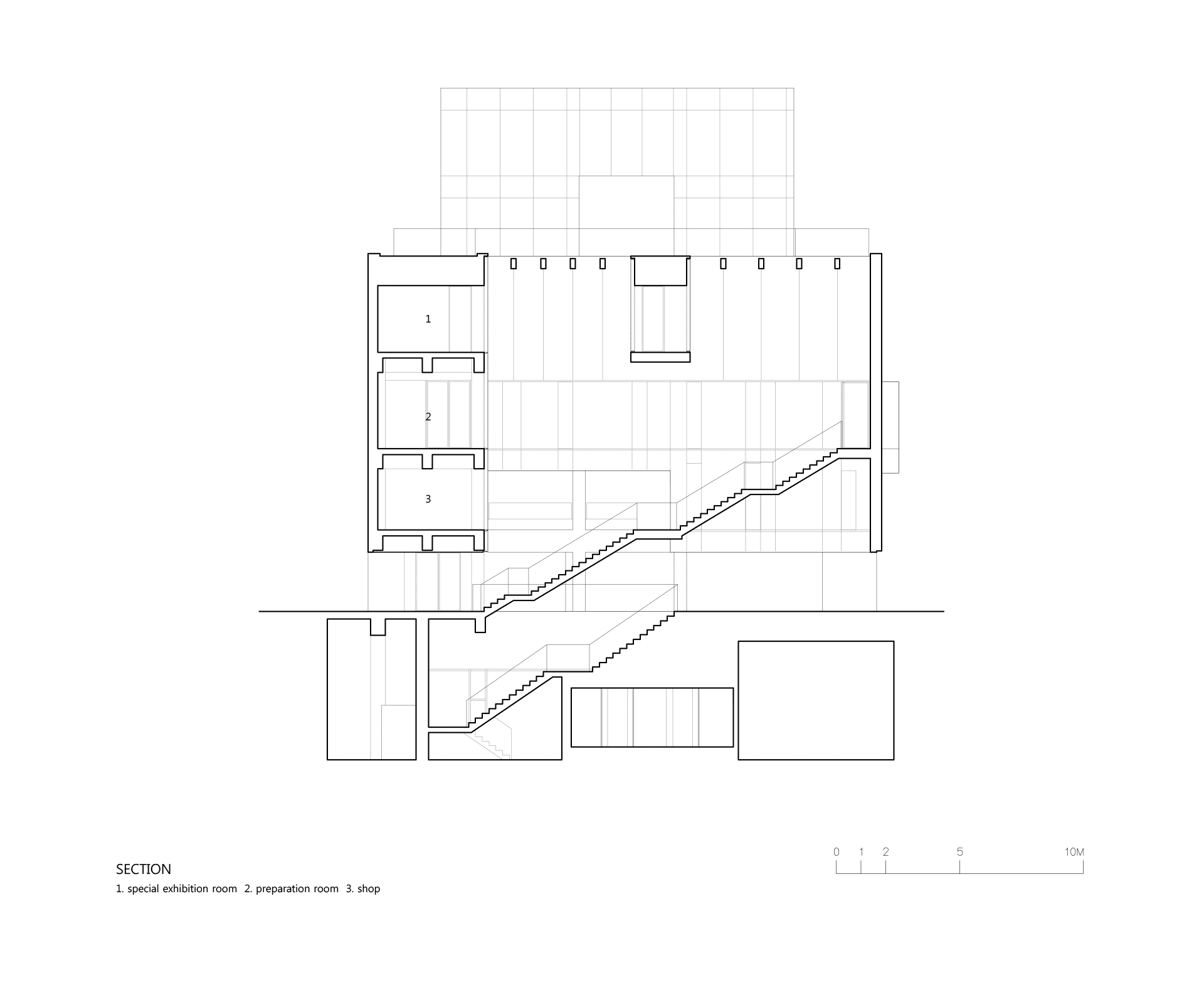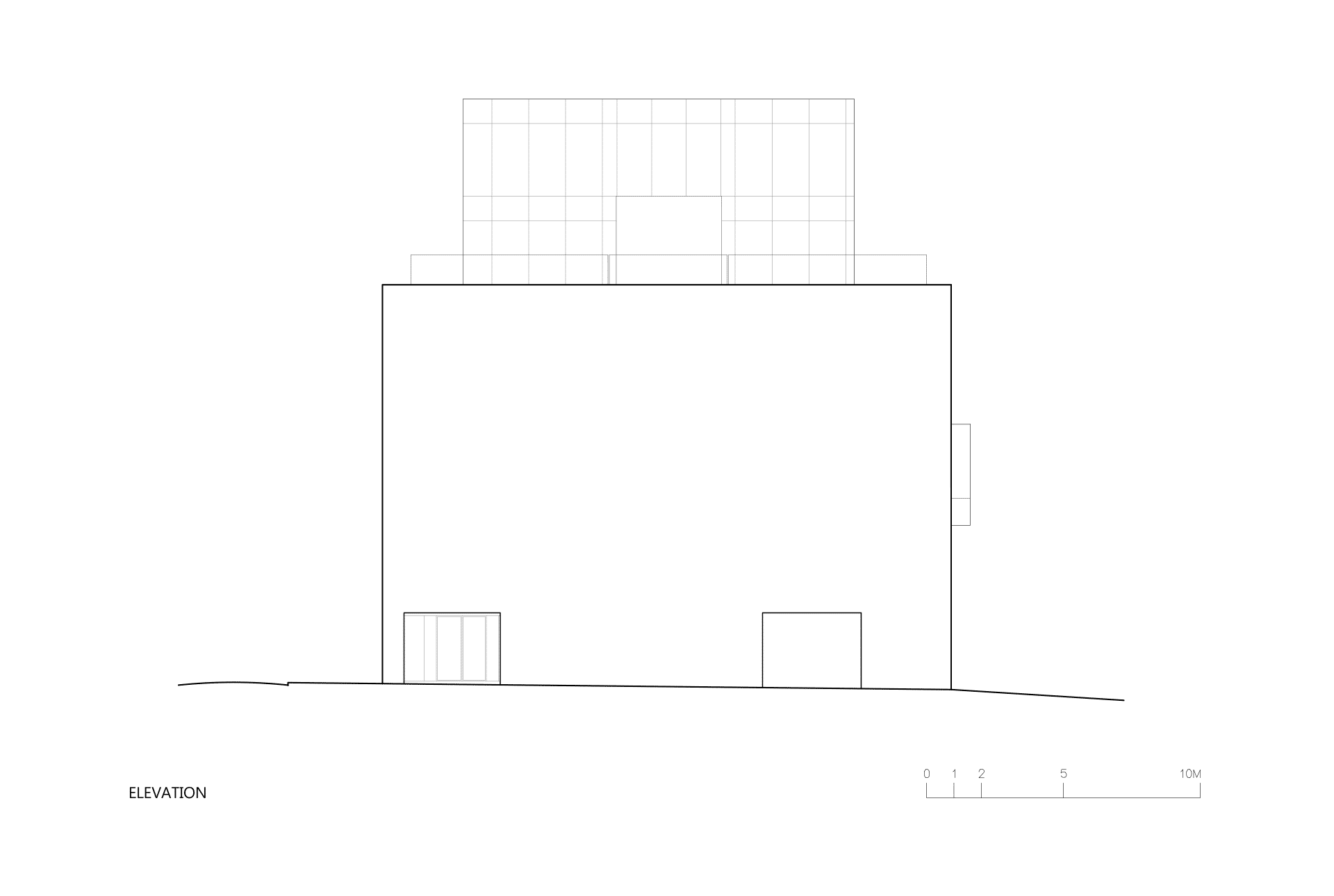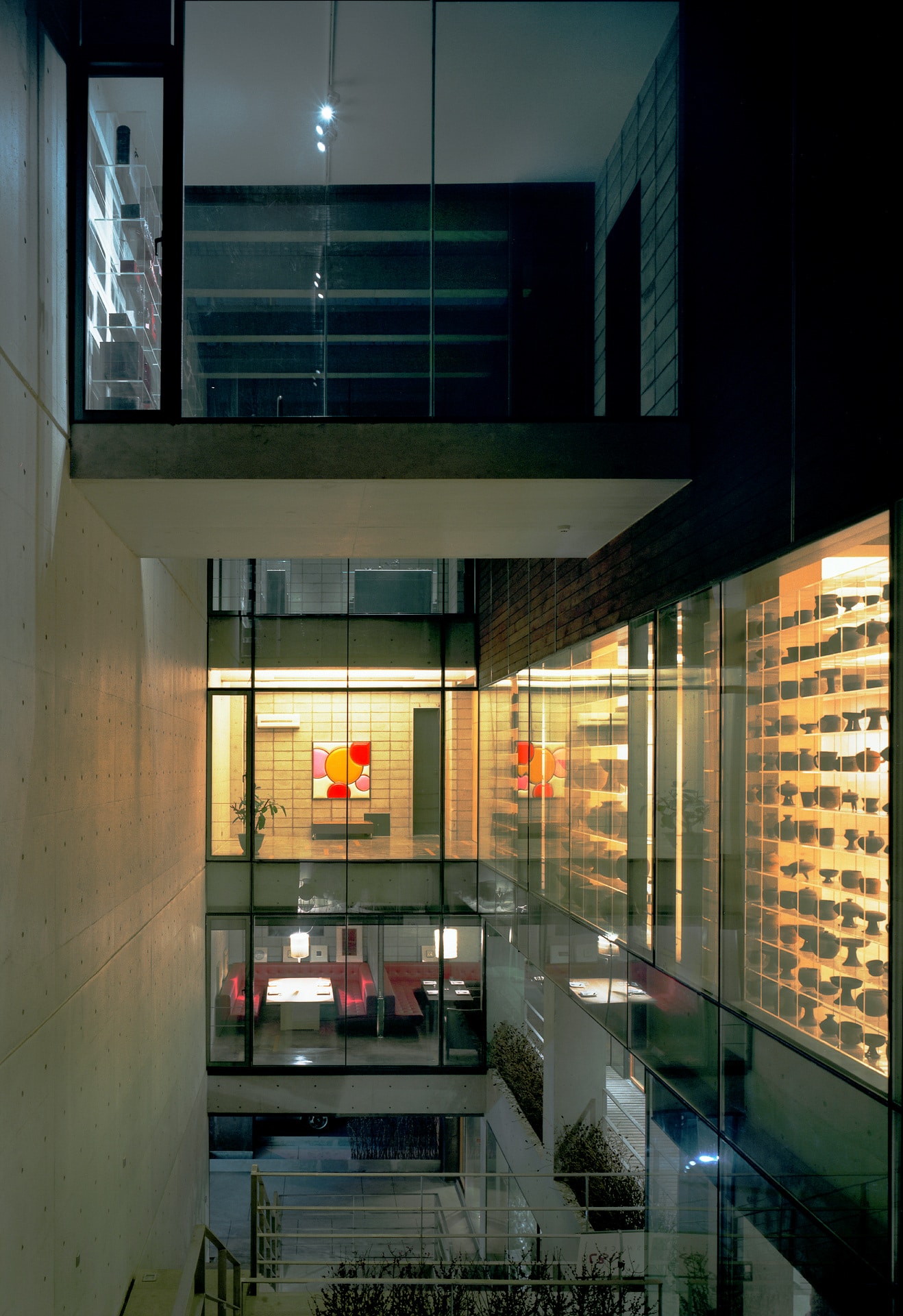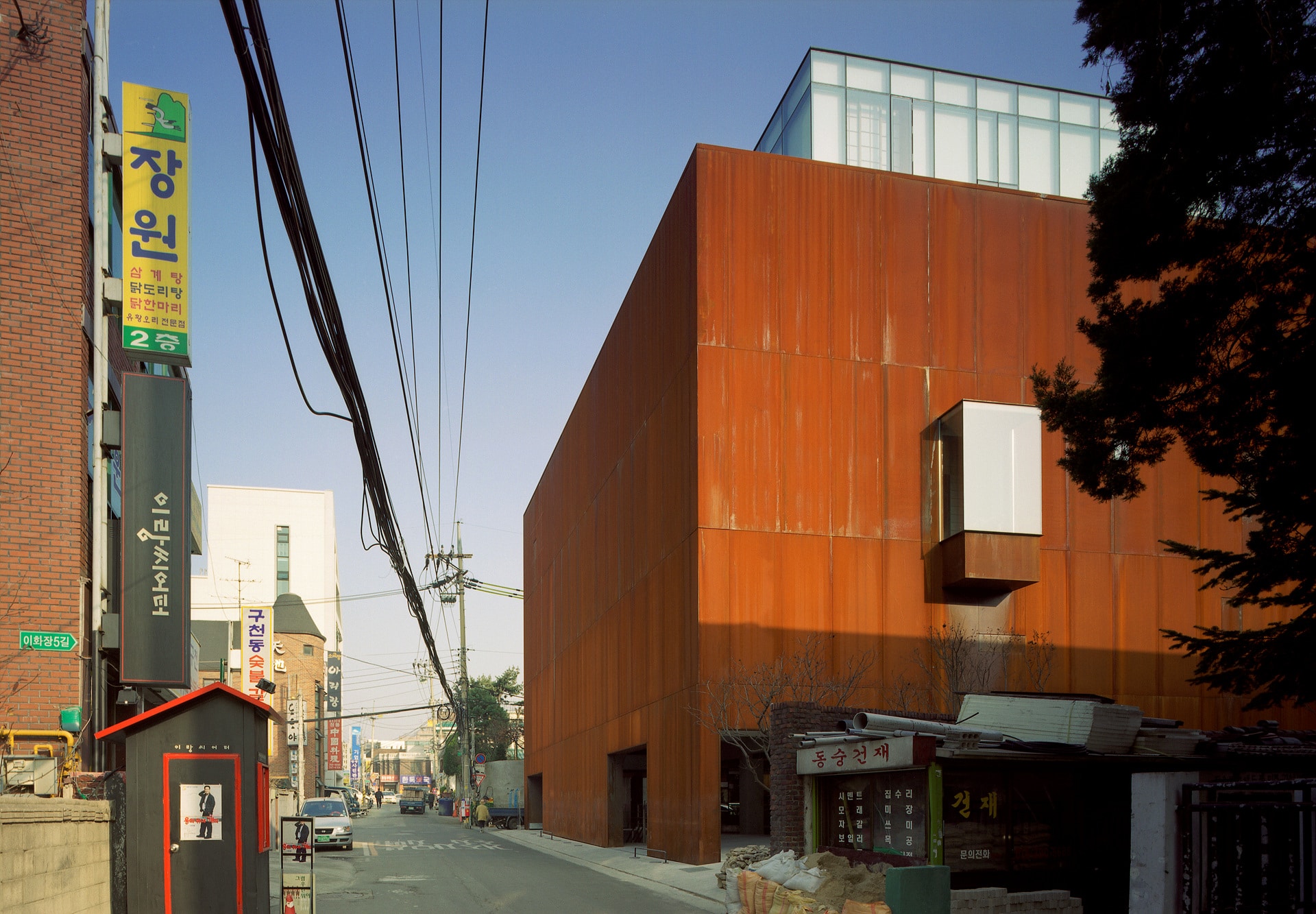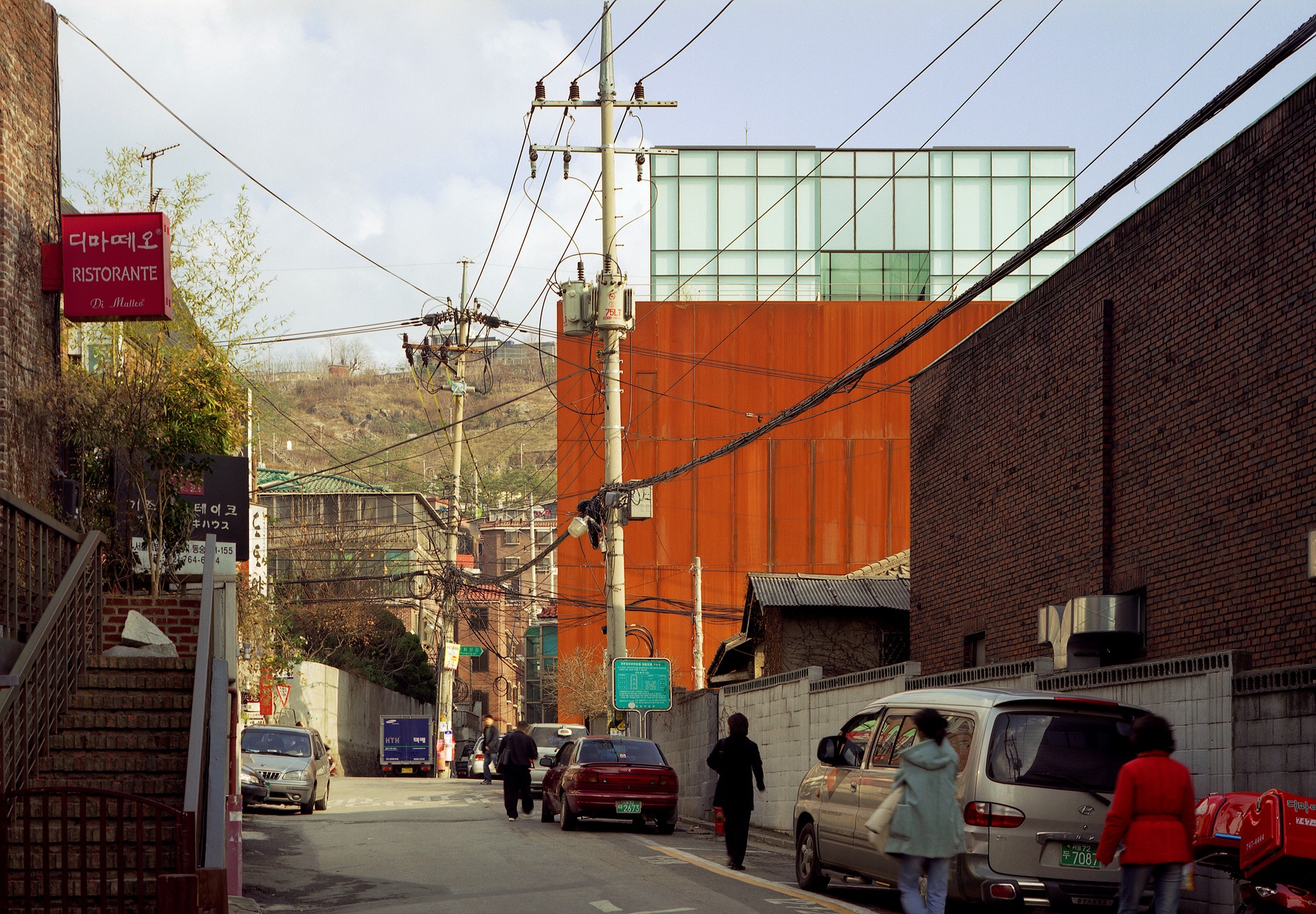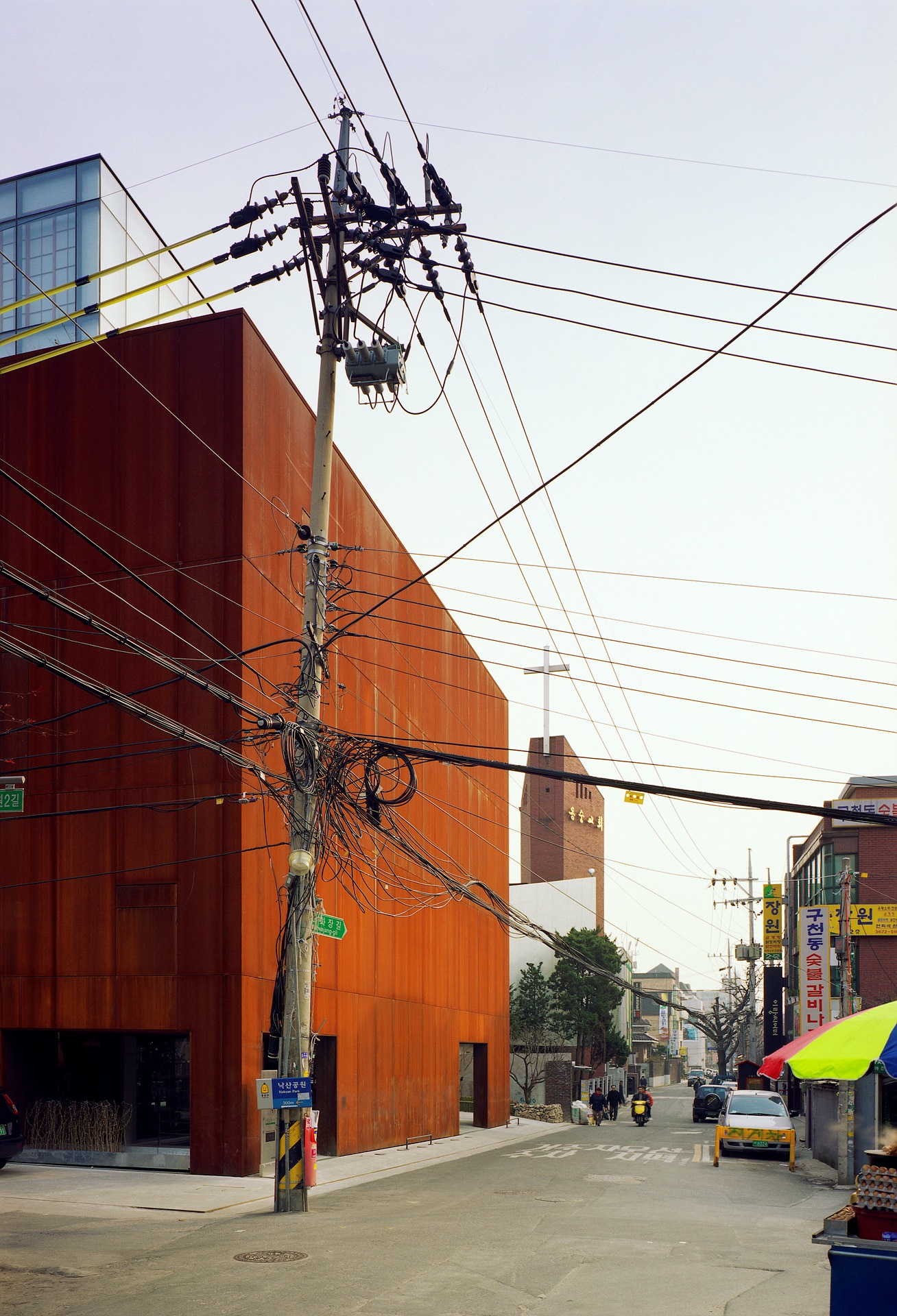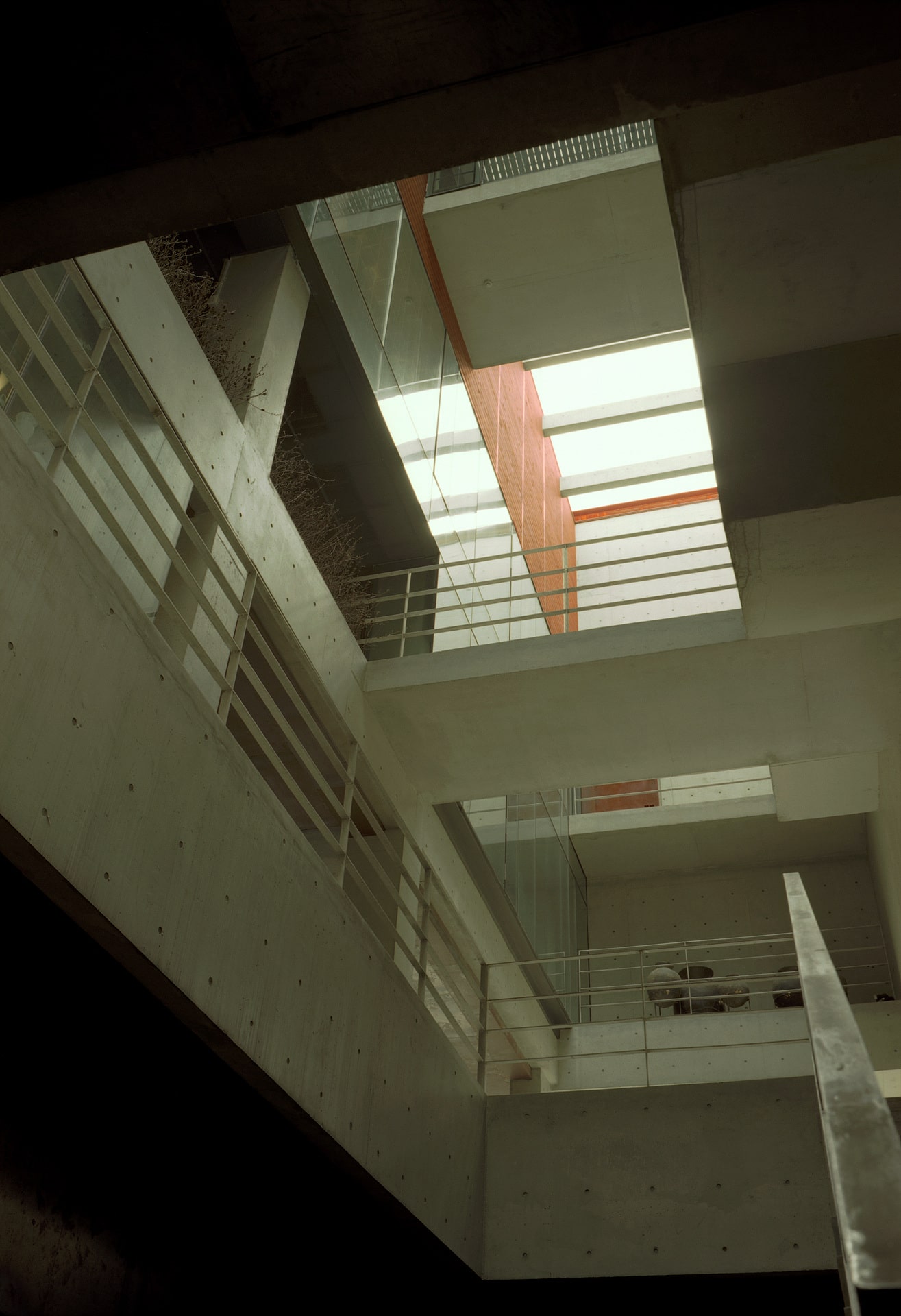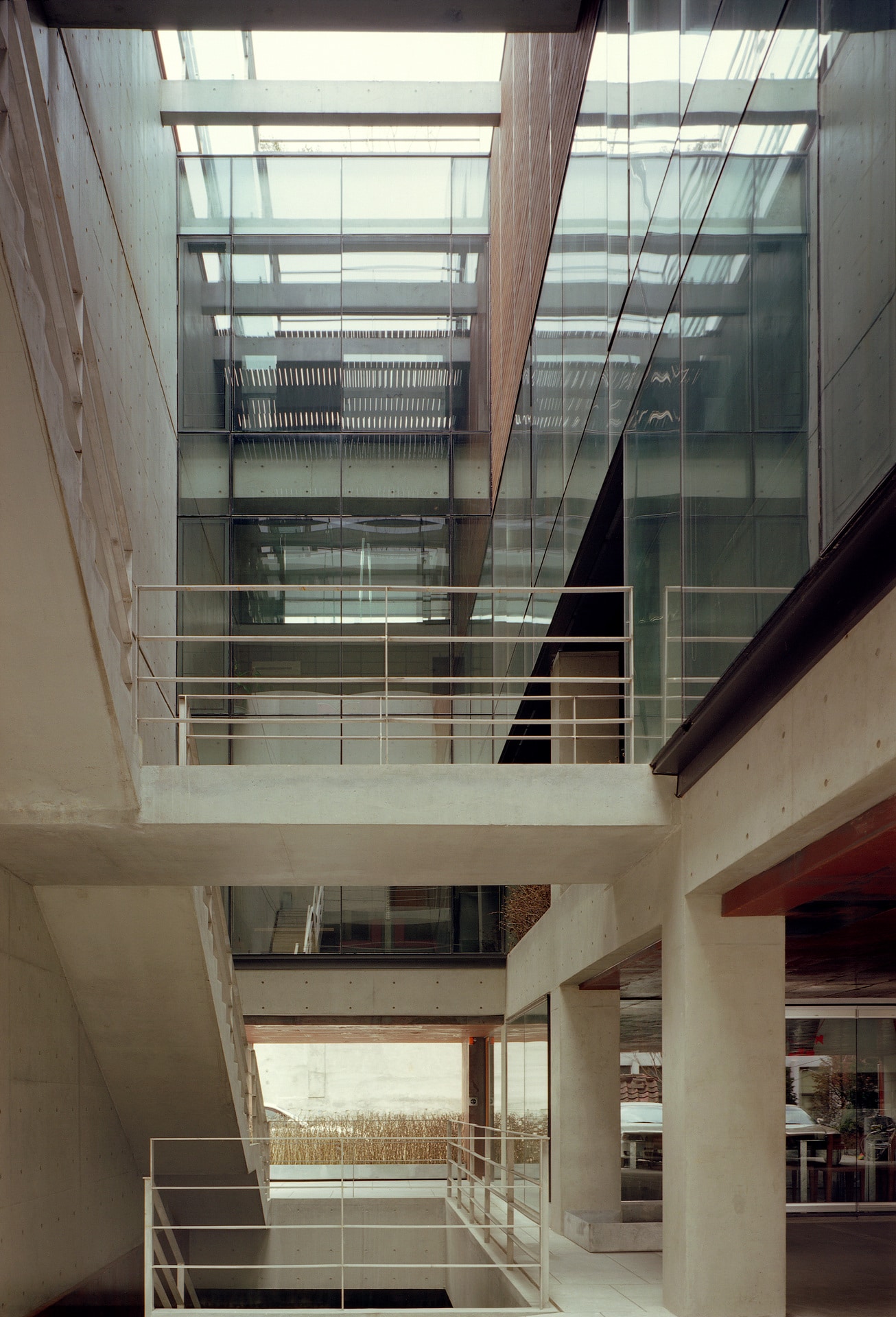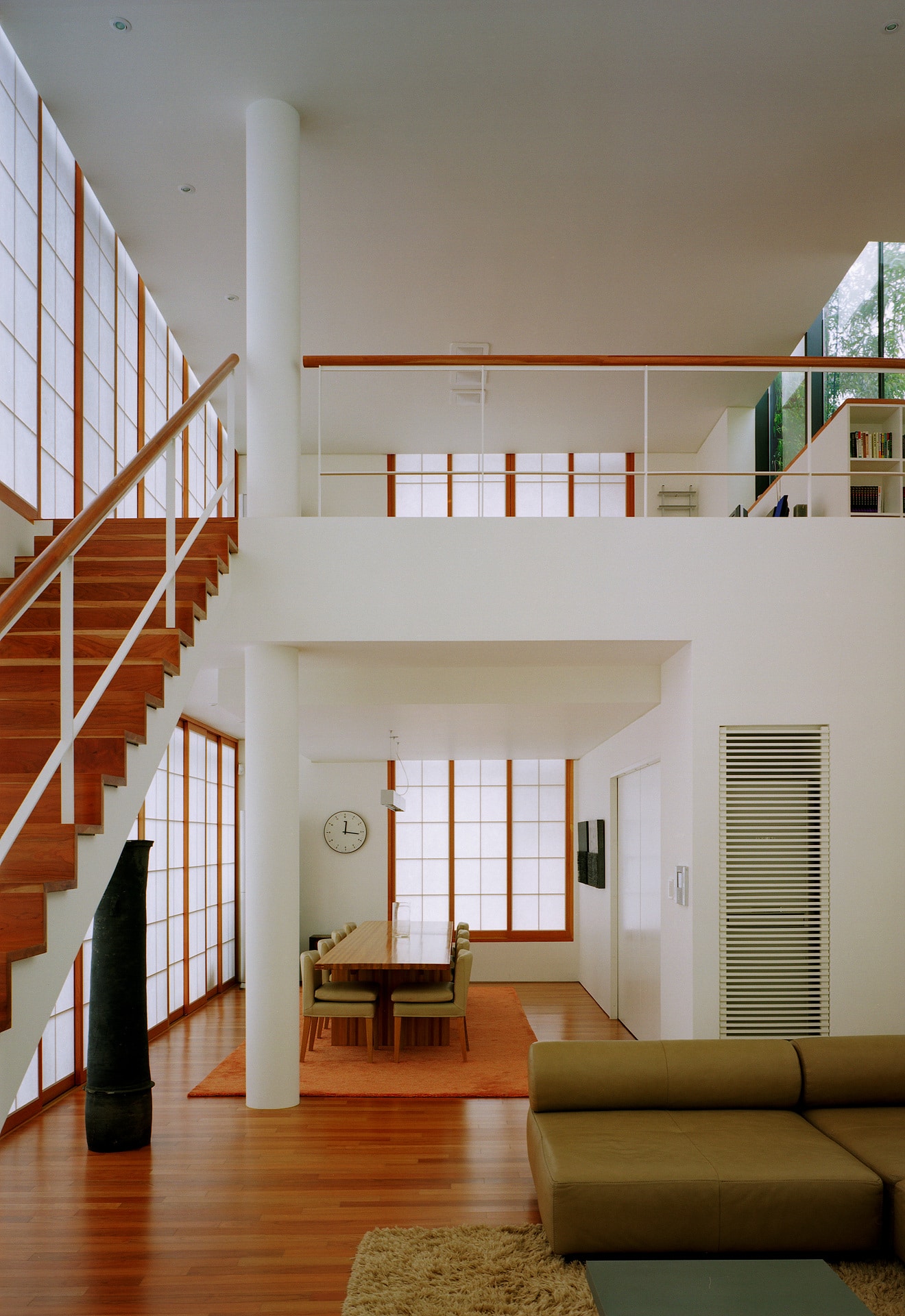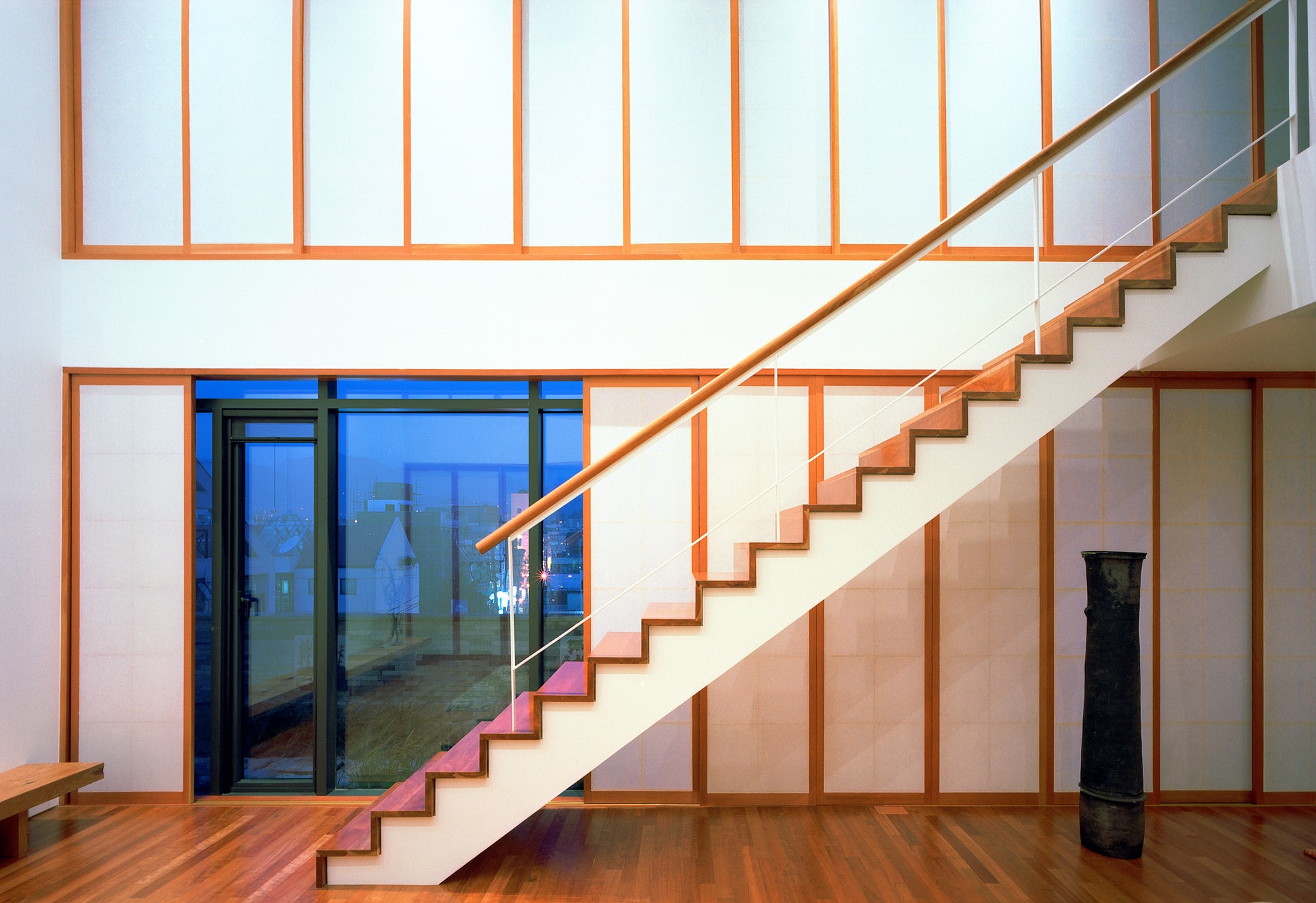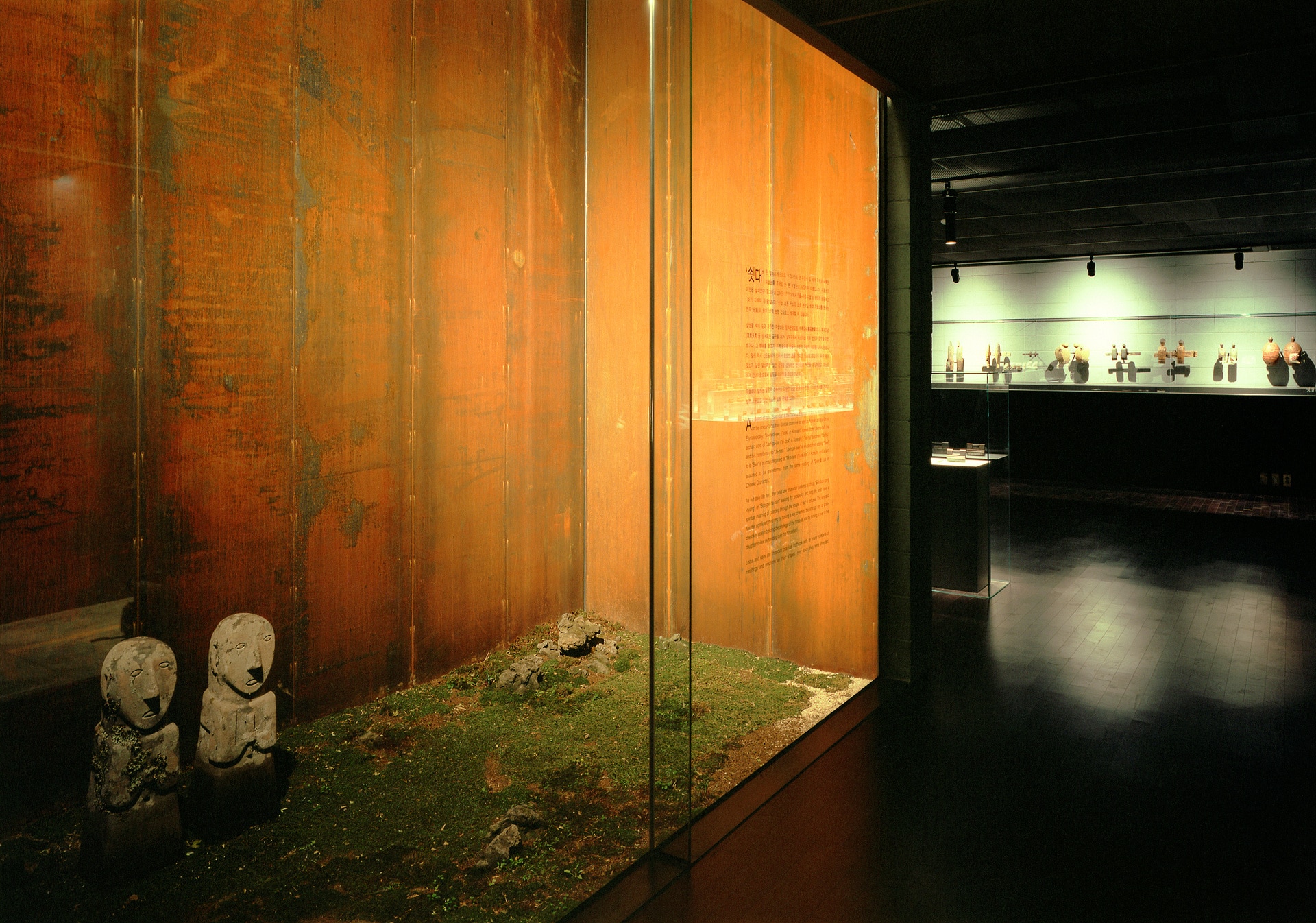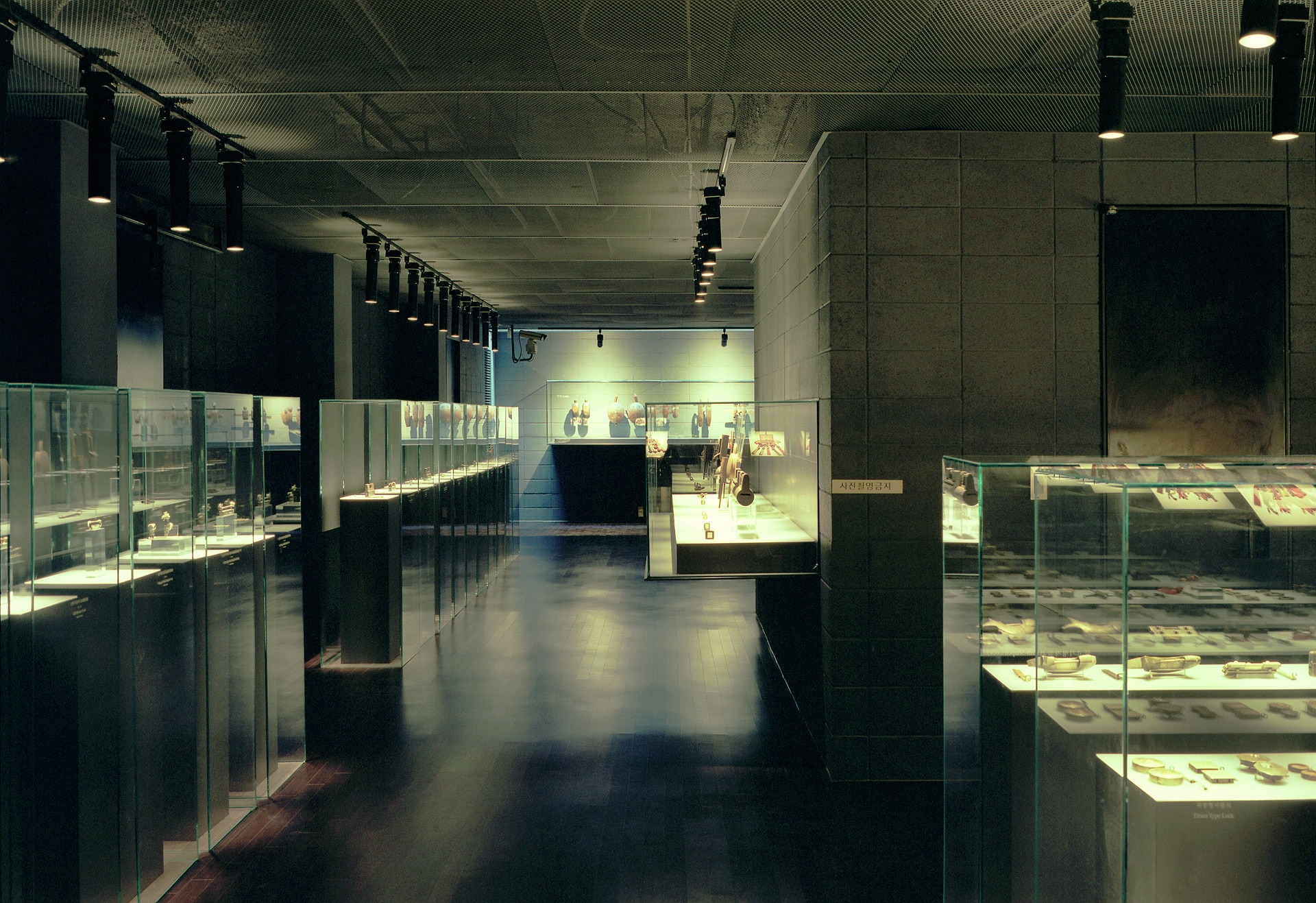Lock Museum
| 완공년도 | 2003 |
| 위치 | 서울 대학로 |
| 대지면적 | 582 m² |
| 건축면적 | 342 m² |
| 연면적 | 1,588 m² |
| Contractor | 제효건설 |
| 완공년도 | 2003 |
| 위치 | 서울 대학로 |
| 대지면적 | 582 m² |
| 건축면적 | 342 m² |
| 연면적 | 1,588 m² |
| Contractor | 제효건설 |
본디 유학을 가르치던 숭교방의 동쪽에 있는 동네라 하여 명명된 동숭동의 역사는 오래 되었다. 동촌으로 불린 조선시대 전통적 주거지였던 이 곳은 서울대학교가 캠퍼스로 사용하면서 한국의 숱한 인재를 배출한 장소였다. 정부는 1975년 서울대학교를 이전시키면서 전체 캠퍼스 부지를 일반에게 100평 단위의 크기로 분양하고 문화시설을 유치하여 아름다운 주택단지를 꿈꾸었으나 곧 이어 불어 닥친 개발의 광풍은 이 지역을 극심한 소용돌이 속으로 몰아 넣었다. 일년에 열 배가 오르는 땅값은 이 지역을 주거단지로 묶어두지 못하고 유흥적 상업시설로 변환시키면서 주택들은 상가로 용도가 바뀌었고 높은 임대료를 견디지 못하는 화랑과 책방들은 이곳을 떠날 수 밖에 없었다. 멀쩡하던 건물이 하루아침에 멕시코 풍으로 혹은 가우디를 흉내내고 디즈니랜드의 요술성을 옮겨오는 등, 이 지역은 천박한 상업주의가 패권을 잡으며 급기야 도시의 윤리를 잃어버리게 되었다. 그나마 서울대학교 시절의 모형을 전시해 놓은 마로니에 공원이 있어서 – 비록 우스꽝스런 시설들로 차 있지만- 숨통을 터 놓는다. 이곳은 곧잘 반정부 운동이나 노동운동을 위한 집회가 쉴 새 없이 열리더니 지난 월드컵 때는 온 국민이 집결하여 축제를 여는 중요한 장소였다. 형편없는 도시시설이지만 도시의 빈 곳이 얼마나 유효한가를 증명한 사건이었다.
이 마로니에 광장의 뒷편에 놓여있는 길 가에 최가철물점의 부지가 있다.
이 땅은 본래 서울대학교 캠퍼스 외곽에 있는 땅이어서 엄밀히 말하면 소위 대학로의 영향권을 기웃거렸을 뿐이다. 또한 이 땅의 뒤편은 아직도 열악한 불량주거군이 밀집되어 있어 그야말로 도시의 경계에 있는 셈이다. 그 바로 위로는 서울을 만든 풍수지리의 한 지형인 낙산이 오래된 불량 아파트들을 이제 막 철거하고 공원으로 단장하였다.
주어진 땅은 작은 땅이며 프로그램은 이 땅 크기의 2배가 넘는 용적을 가져야 한다. 건축주는 오랫동안 수준 높은 건축 하드웨어를 제작해온 현대적 명장이며 그는 그의 직업에 걸맞게 대단히 많은 자물쇠를 수집하여 쇳대박물관을 이 건축 속에 넣고자 했다. 한국에 유일한 곳이 될 이 박물관 외에 건축주의 주거와 이벤트를 열 수 있는 공간, 이 건물을 유지할 수 있는 수익이 나올 음식점 및 디자인 숍이 이 건축의 프로그램이다.
나는 이 밀집한 곳, 헤아릴 수 없이 많은 양식의 건물들, 어지러운 간판들, 그 위로 지나가는 전선들과 전신주들 – 어디 하나 진정성을 찾지 못하는 이 곳에 무게를 놓기로 하였다. 단순해야 중력의 힘이 더 할 것이다. 창도 없고 장식도 없으며 오로지 철의 무게만 있다. 그것은 이 악다구니하는 풍경 속에 긴장을 유발하는 네가티브한 비움이다. 그러나 그 속은 밝고 밝다.
Daehakro, meaning university road, where this building belongs to, was the traditional habitation of the Joseon period, and, was also where numerous talented leaders of Korea were developed, as Seoul National University used is as its campus. After the university moved out in 1975, this area was sold to individuals in 330 square units, and had visions about a beautiful residential unit by attracting cultural facilities. However, the storm of economic development that soon followed put this area into a wild whirlpool. The price of the land, which increased tenfold every year, could not help to keep this area as a residential one, and being changed into entertainment and commercial facilities, the houses had their functions changed into shops. The galleries and bookstores had to leave, not being able to bear the pricey rent. The wholesome buildings turned in a day into a Mexican-styled one or Gaudi-styled structure or brought in the Magic Castle of Disney Land. The area became a place of congested, low, mercantile hegemony, finally leading to a loss of ethics for the city.
This building is located on the edge of the road. Because this land was originally outside the old campus of Seoul National University, it was only on the periphery of the so-called influential range of Daehakro. Also, the area behind this part of the land is still filled with inferior residential units and, therefore is definitely on the urban border. Just above it is the Naksan, a form of the traditional topography that shaped Seoul, where old and inferior apartments have been recently evacuated to develop a park.
The given area was small, and the program itself was to have a volume of twice the size of the area. The client is a modern master craftsman, who has been creating architectural hardware of a high standard for a long time; and he, suitably for his work, had collected an immense number of locks and keys, which he wished to form a lock museum with, to fill in this architecture. Apart from this museum, which will be the only one of its kind in Korea, a space for the client’s habitation and events, and a restaurant and designing shop to provide for the maintenance of the building are included in this architectural program.
To introduce some weight was highly needed to this dense area where buildings of so many numbers of styles, the confusing signboards, the electric cables and telegraph poles overhead are not offering one bit of feeling of stability. The simpler it is, the more acutely the weight will be felt. No windows, no adornments, but only the weight of the metal will be there. It is a negative void to create tension in this brawling scenery. But inside it there is much brightness.
